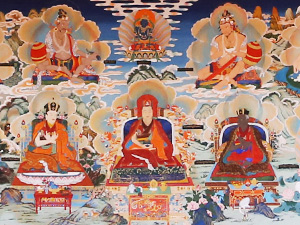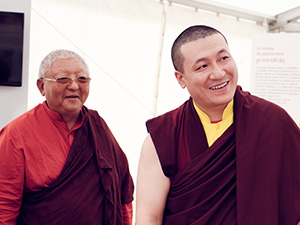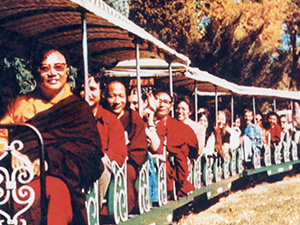Buddhism
A Path of Wisdom
From Suffering to Liberation
More than 2,500 years ago, the Indian prince Siddartha became aware of the suffering and dissatisfaction inherent to our human life. Aspiring to free himself from this, he abandoned his princely life to follow the teachings of several renunciant hermits and practiced various austerities. As asceticism did not lead him to liberation, he abandoned it in favor of a middle way beyond all extremes. He then clearly and deeply understood suffering, its origin, its cessation and the way to actualize it. Free from ignorance, he dispelled illusion and thus freed himself from all dissatisfaction. He then revealed enlightenment–direct knowledge of reality as it is–and became known as Buddha, the enlightened one. In response to requests from many beings, he devoted the rest of his life to sharing the wisdom he had discovered in order to help them actualize the state of Buddhahood present in each of them.
“Abandon all harmful acts,
Accomplish all that is beneficial,
And master one’s own mind–
This is the teaching of the Buddha.”
Buddhist Practice
Three Indivisible Trainings
Buddhist practice can be summarized in three fields of training:
- Conduct : based on understanding, consists in abandoning harmful acts and cultivating beneficial acts in order to create conditions of life conducive to the path towards freedom from suffering and dissatisfaction.
- Meditation or introspection : has two aspects: mental calm and higher vision. Mental calm consists of turning one’s gaze inward and training oneself to remain in the natural state of mind, free from all agitation. From there, the meditation of higher vision leads to a deep, experience-based knowledge of our true nature and that of the world of appearances.
- The discernment that comes from listening, reflection and familiarization : progressively dissipates any misunderstanding about the true nature of mind and phenomena.
“If we combine these three aspects, we will have understood the meaning of the Dharma, we will be of real help to others, and our personal life will be simple and easy.”

The Transmission Lineages
Au fil des siècles, les paroles et les méthodes du Bouddha ont été transmises en Inde et dans toute l’Asie, d’enseignants accomplis à étudiants, constituant ainsi différentes lignées de transmission authentiques.

Spiritual Masters
Siège européen de la lignée de transmission Karma Kagyü, le centre d’étude et de méditation Dhagpo Kagyu Ling est actuellement placé sous la guidance spirituelle de Thayé Dorjé, le 17e Gyalwa Karmapa et de Jigmé Rinpoché, son représentant en Europe.

Becoming Anchored in Europe
En réponse à la requête de ses étudiants occidentaux, le 16e Karmapa a envoyé en France en 1975 d’éminents lamas et a expliqué que cinq ressources complémentaires étaient nécessaires pour que l’enseignement du Bouddha s’ancre en Europe.

Dhagpo Kagyu Ling
En 1975, M. et Mme Benson ont offert au XVIe Karmapa un terrain et un corps de ferme en Dordogne pour y établir un centre bouddhiste. En 1977, Karmapa a nommé ce lieu Dhagpo Kagyu Ling, le lieu de transmission de la lignée de Gampopa, et en a fait son siège européen.
